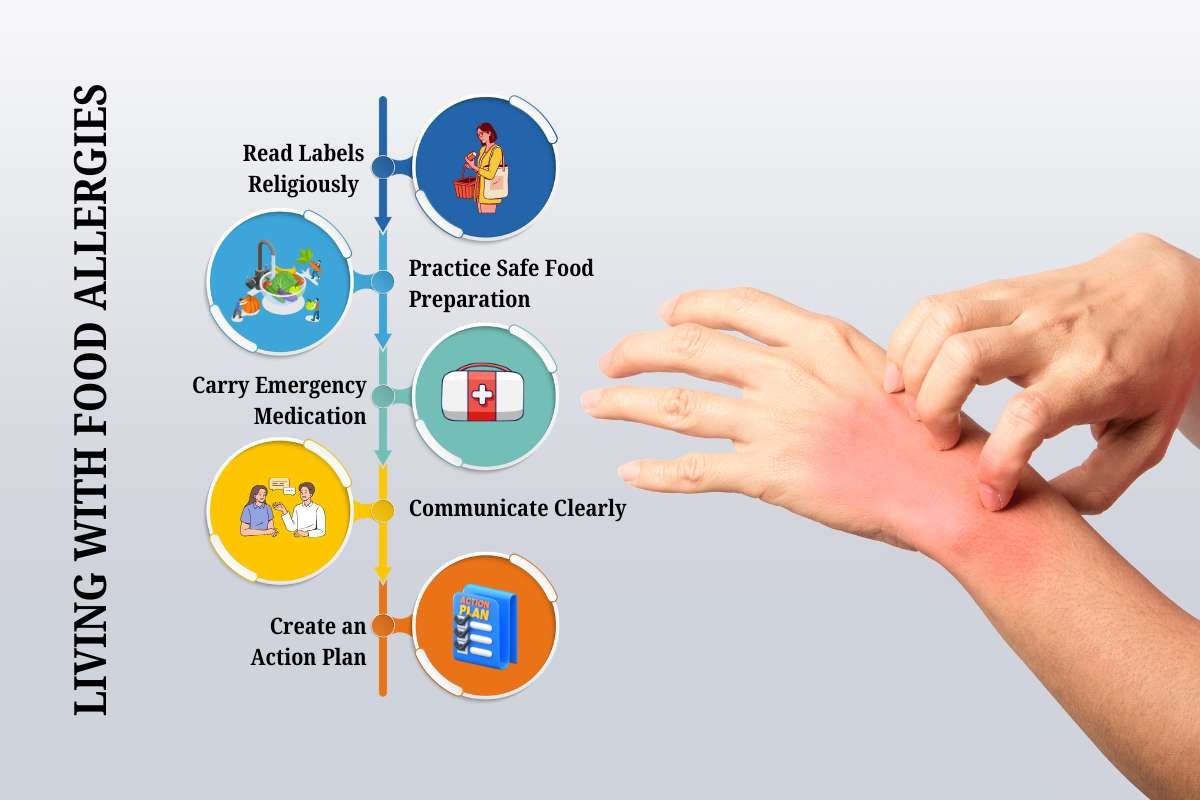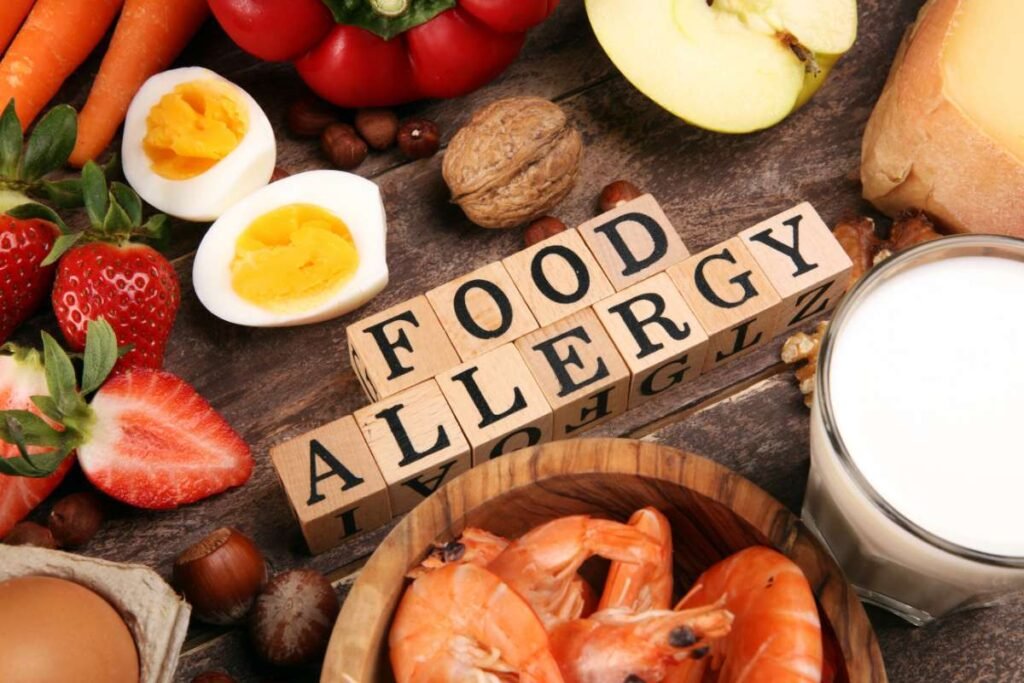Welcome to the world of food allergies, where something as innocent as a peanut or a sip of milk can turn into a medical emergency. While most of us eat without a second thought, millions are crossing a culinary minefield every day. In fact, allergies from food now affect over 32 million Americans, including 1 in 13 children—and the numbers are only climbing.
But here’s the good news: managing food allergies doesn’t mean giving up the joy of eating. With the right knowledge, tools, and mindset, safety and flavor can coexist beautifully. This is where the idea of “How to Stay Safe without Giving up Flavor” comes into play.
So whether you’re living with allergies, caring for someone who is, or just curious about what all the label-checking and ingredient-swapping is about, this guide will break it all down. No fear, no fluff—just real talk about what causes food allergies, how to spot them, and most importantly, how to live fully (and deliciously) despite them.
Let’s dig in.
What Are Food Allergies?

Allergies occur when the body’s immune system mistakenly identifies a harmless food protein as a threat. In response, the immune system releases chemicals like histamine, which cause symptoms ranging from mild to severe. This reaction is different from food intolerance, which is generally limited to digestive issues and not driven by the immune system.
The most common allergenic foods are known as the “Big 9”:
- Milk
- Eggs
- Peanuts
- Tree nuts
- Fish
- Shellfish
- Soy
- Wheat
- Sesame (recently added due to rising cases)
Even a trace amount of these foods can cause a serious reaction in sensitive individuals, which is why awareness and education are crucial.
Symptoms of Food Allergies

Symptoms can vary greatly depending on the person and the severity of the allergy. They typically occur within minutes to two hours of eating the offending food. Here are some of the most common signs:
- Hives, itching, or skin rash
- Swelling of the lips, face, tongue, or throat
- Difficulty breathing or wheezing
- Abdominal pain, nausea, vomiting, or diarrhea
- Dizziness or lightheadedness
- Anaphylaxis—a life-threatening reaction that requires immediate medical attention
It’s important to recognize early symptoms and respond quickly. In the case of anaphylaxis, epinephrine is the only effective treatment and should be administered promptly.
Causes and Risk Factors

The exact cause of food allergies is still being studied, but several factors may contribute to their development:
1. Genetics:
Children with parents who have allergies (food or environmental) are more likely to develop allergies themselves.
2. Early dietary exposure:
Some research suggests that delaying the introduction of allergenic foods might increase the risk, while early exposure (in a controlled manner) could help prevent them.
3. Gut health:
Emerging studies show a link between gut microbiota and the development of allergic reactions.
4. Environmental factors:
Pollution, diet, and even method of birth (C-section vs. vaginal) may play a role in triggering immune sensitivities.
Understanding these risk factors can help families make informed decisions about prevention and management.
Diagnosing Food Allergies
If a food allergy is suspected, it’s critical to consult with an allergist. Diagnosis typically involves:
- Medical history review
- Skin prick tests to identify reactions to specific allergens
- Blood tests to measure immune response
- Oral food challenges (conducted under medical supervision)
Self-diagnosis or elimination diets without medical guidance are not recommended, as they can lead to unnecessary dietary restrictions or missed diagnoses.
Living with Food Allergies

Being diagnosed with a food allergy can be overwhelming, but with the right strategies, it’s entirely possible to live a safe, full, and healthy life. With planning, creativity, and the right tools, even the most restricted diets can be rich in variety and taste.
1. Read Labels Religiously
Food packaging in many countries is required to clearly list major allergens. Always double-check labels—even for products you’ve purchased before—as manufacturers can change ingredients without warning.
2. Practice Safe Food Preparation
Avoid cross-contact in the kitchen. Use separate utensils, cutting boards, and cookware when preparing food for someone with a food allergy.
3. Carry Emergency Medication
Anyone diagnosed with severe food allergies should carry an epinephrine auto-injector (like an EpiPen) at all times. It’s also essential to educate family, friends, and coworkers on how to use it in case of emergency.
4. Communicate Clearly
When dining out, notify restaurant staff about your allergies. Ask detailed questions about food preparation, and don’t hesitate to speak up if you’re unsure about a dish.
5. Create an Action Plan
Especially for parents of allergic children, having an allergy action plan in place at home, school, and other environments is vital. Include emergency contacts, symptoms to watch for, and step-by-step instructions in case of a reaction.
Impact on Mental and Social Health
Allergies are not just a physical condition—they can take a toll on mental and emotional well-being. Children may feel excluded at birthday parties, while adults may struggle with anxiety around social gatherings or eating out.
Support groups, therapy, and open communication with loved ones can help ease this burden. More schools and workplaces are also becoming allergy-aware, creating safer, more inclusive environments.
Innovations in Food Allergy Research
The future is promising for those living with allergies. Researchers are exploring treatments like:
- Oral Immunotherapy (OIT): Gradual exposure to small amounts of an allergen to build tolerance.
- Biologic medications: Designed to alter immune system responses.
- Gene editing and probiotics: Investigated as potential tools for resetting immune reactions.
While there’s no universal cure yet, advances in treatment and awareness offer new hope.
Conclusion
Food allergies are a growing public health concern, but with awareness, education, and the right precautions, those affected can lead safe, empowered lives. Whether you’re managing your own allergies or supporting someone else, it’s important to stay informed and proactive. From allergen-free recipes to inclusive social spaces, it’s possible to thrive without sacrificing the joy of eating.
As science progresses and conversations around food safety continue to evolve, we can look forward to a future where fewer people live in fear of the foods they eat—and more can enjoy every bite with confidence.









